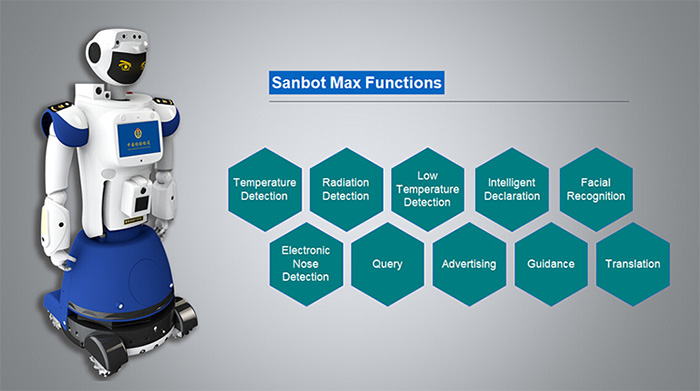Introducing your new customs inspector
Being a customs officer is a tough job, with the responsibility of knowing who is entering and leaving the country. Customs personnel also have to ensure that nothing sinister or banned enters the country. Customs laws differ from country to country with regards to fruits, seeds and the export of animals. In addition, the global population is rising and more people are travelling than ever before, making the job of a customs officer increasingly difficult.
Around the world Artificial Intelligence (AI) has been employed to lighten the load on customs officials. However, Sanbot are now taking that assistance to the next level with the launch of the Sanbot Max Customs Inspector at the Shenzhen Bay Port, the port of entry to China on the border with its special administrative region of Hong Kong.
Installed in November, people passing through the port were greated by the 1.45m tall robot who broadcast the following message: "Welcome to Shenzhen Bay Port, I am the electronic customs inspector. When leaving or entering China, all the passengers should abide by the laws and regulations of China Inspection and Quarantine and receive the health condition inspection."
The intelligent humanoid robot is customised from Sanbot Max robot, QIHAN’s newest intelligent service robot. The Sanbot Max customs inspector integrates an infrared thermal imaging system, nuclear radiation monitoring system, facial recognition and other special inspection technologies.
At the port, Sanbot Max helps detect and inspect the passengers and banned food in their luggage. If the advanced service robot finds the passenger whose temperature is higher than 37.3°C, stuff with exceeded radiation, banned frozen meet or fruit, or any other banned stuff, the intelligent customs inspector will capture the image of the passenger or banned stuff and automatically send the image to monitoring centre and link the mobile terminal, to inform working personnel for further inspection.

Sanbot Max can also offer query services for the passengers about the special quarantine laws and regulations. The international passengers can choose their mother language to have voice interaction, or check out from the touchscreen to learn about China Inspection and Quarantine. The robot’s multi-language capability includes Mandarin, Cantonese, English and other languages.
At the Shenzhen Entry-Exit Inspection and Quarantine Bureau, the Sanbot Max intelligent robot has taken over much of the repetitive work and saves time for customs personnel, not to mention providing more accurate and strict AI inspection. In the future, the Sanbot Max will work for more ports in Shenzhen, or even in China, to benefit the customs and passengers.





